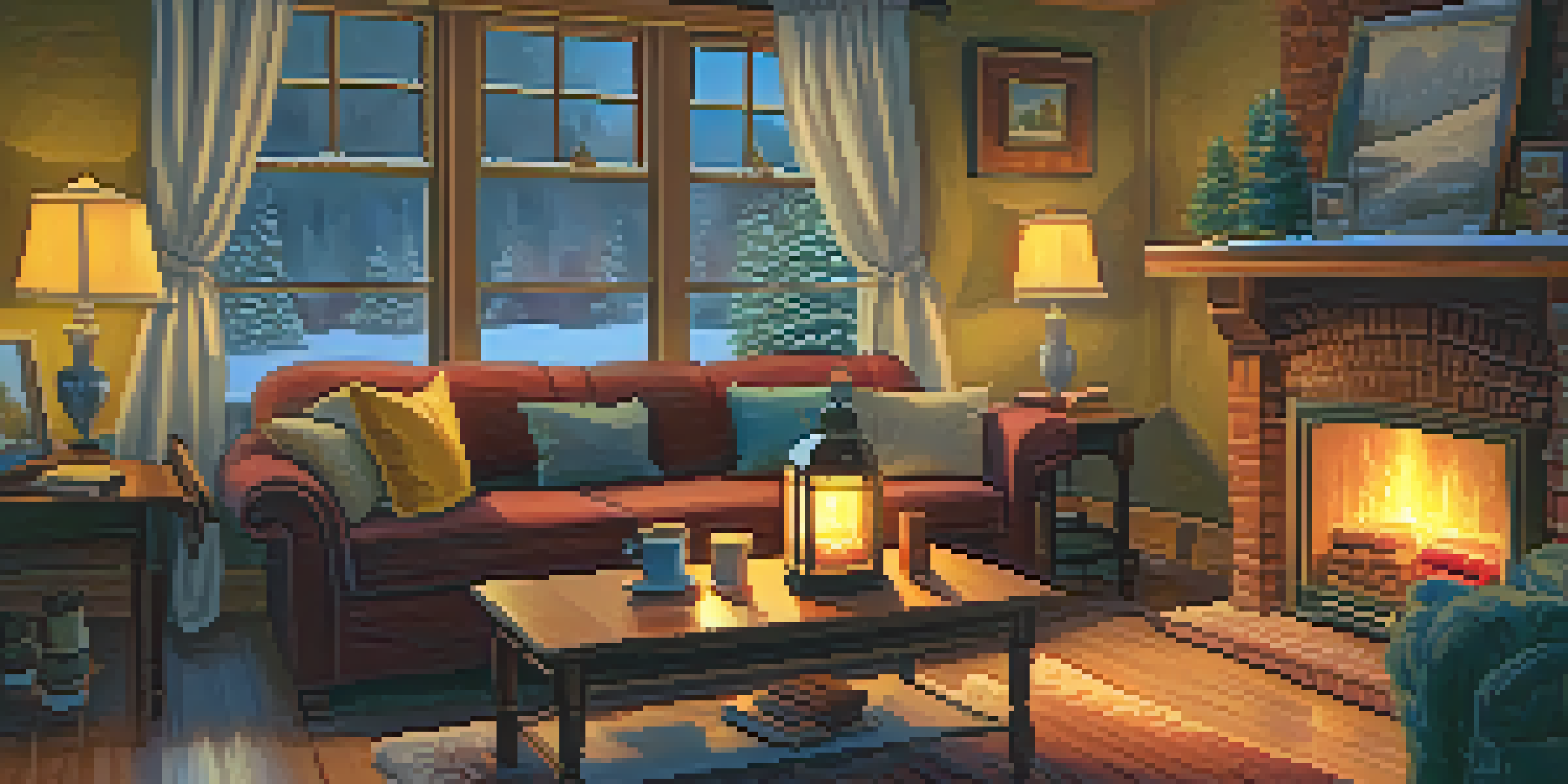Winter Home Maintenance: Essential Tasks to Preserve Value

Why Winter Maintenance Is Crucial for Homeowners
Winter can be tough on your home, and neglecting maintenance tasks can lead to costly repairs. As the temperatures drop, issues like frozen pipes and roof damage become more likely. By staying proactive, you can prevent these problems and keep your home safe and warm.
An ounce of prevention is worth a pound of cure.
Consider your home as a living entity that needs care and attention. Just like we prepare ourselves for the winter months with warm clothes and supplies, our homes require a little extra TLC. By investing time in winter maintenance, you’re preserving not only the safety of your home but also its long-term value.
Additionally, winter maintenance can enhance your home’s energy efficiency. When your home is well-prepared for the cold, you’ll find that heating costs may decrease, freeing up your budget for other important tasks.
Inspect and Clean Your Heating System
One of the first tasks on your winter maintenance list should be to inspect your heating system. Whether you have a furnace, boiler, or heat pump, ensuring it’s in good working order is vital. A simple inspection can help identify issues before they become serious problems.

Cleaning your heating system is equally important. Dust and debris can accumulate over time, reducing efficiency and air quality. Consider replacing filters and cleaning vents to improve airflow, making your heating system work more effectively.
Winter Maintenance Saves Costs
Proactive winter maintenance prevents costly repairs and enhances your home's long-term value.
By keeping your heating system in top shape, not only do you ensure your comfort, but you also extend its lifespan. Regular maintenance can save you money in the long run by avoiding unexpected breakdowns during the coldest months.
Seal Windows and Doors to Prevent Drafts
Drafty windows and doors can make your home feel chilly and lead to higher energy bills. A simple inspection can reveal gaps that need sealing. Look for weather stripping or caulking that may have worn away and replace it to keep the warm air inside.
The best way to predict the future is to create it.
You might be surprised at how much heat is lost through small openings. Think of your home as a cozy blanket; if there are holes in it, you’re going to feel the cold. Sealing these gaps can help maintain a comfortable environment and save you money on heating costs.
Additionally, this task enhances your home's energy efficiency rating, making it more appealing if you ever decide to sell. A well-sealed home is a selling point that potential buyers appreciate, contributing to its value.
Check Your Roof and Gutters for Winter Readiness
Your roof is your home’s first line of defense against winter weather. As snow accumulates, it can put pressure on your roof, causing leaks or even structural damage. Before winter sets in, inspect your roof for any loose shingles or signs of wear that could lead to problems down the line.
Cleaning your gutters is just as crucial. Clogged gutters can cause water to back up and freeze, leading to ice dams that can damage your roof and siding. Make sure to clear any leaves or debris so that melting snow can flow freely away from your home.
Protect Against Frozen Pipes
Insulating vulnerable plumbing and letting faucets drip can help avoid the nightmare of frozen pipes.
Taking these preventive measures can save you from costly repairs and ensure that your home remains dry and secure throughout the winter months. It’s all about being proactive rather than reactive when it comes to home maintenance.
Prepare Your Outdoor Spaces for Winter Weather
Don’t forget about your outdoor spaces when preparing for winter! From patio furniture to garden hoses, ensuring these items are stored properly can prevent damage. Consider bringing in any delicate plants or protecting them with covers to shield them from frost.
It’s also wise to service your snow removal equipment, such as shovels and snow blowers. A little maintenance now can save you a lot of hassle when the snow starts to fall. Make sure that everything is in working order, so you’re ready to tackle winter storms head-on.
Finally, remember to check outdoor lighting fixtures. With shorter days, good lighting is essential for safety. Ensure that paths are well-lit and that outdoor lights function properly to help navigate your property throughout the darker months.
Inspect and Protect Plumbing to Avoid Freezing Pipes
Frozen pipes can be a homeowner's worst nightmare during winter. To prevent this, inspect your plumbing and identify any areas that might be vulnerable to freezing. Insulating exposed pipes, especially in unheated areas like basements or attics, can significantly reduce the risk.
Additionally, let faucets drip during extreme cold spells to keep water flowing and reduce pressure building up in the pipes. This simple trick can be a lifesaver and save you from the stress of dealing with a burst pipe.
Review Insurance for Winter Risks
Reviewing your home insurance policy ensures you have adequate coverage for winter-related damages.
Taking these precautions not only protects your home but also preserves its value. Water damage can lead to extensive repairs, which can diminish the overall worth of your property.
Review Your Home Insurance Policy
Winter maintenance isn’t just about physical tasks; it’s also a good time to review your home insurance policy. Ensure that you have coverage for winter-related damages, such as roof leaks from heavy snow or ice damage. Being informed can save you from financial headaches later.
Talk to your insurance agent about any changes in your policy that might be beneficial as winter approaches. Sometimes, additional coverage options can be added at a reasonable cost, giving you peace of mind during the cold months.

Finally, documenting your home’s condition before winter can be helpful for insurance claims if needed. Take photos and keep receipts for any maintenance work done, so you’re fully prepared for any unexpected events.